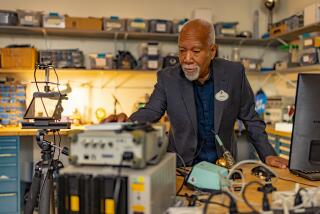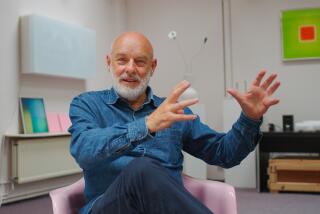Tilt shift’s shrinking technique is a growing effect
Open on: an aerial shot of a dollhouse-sized sports stadium. Cut to: toy trains and buses speed toward the soccer game. Close on: an itsy-bitsy marching band and teeny cheering fans fill the stadium in fast-motion, time-lapse photography. The mini-city featured in this animated sequence seems like an especially intricate and sophisticated architectural model.
Or is it?
That scene — from a 2011 ESPN commercial — was actually done with a photographic technique called tilt shift. It’s a special effect that alters focus and depth of field on life-sized, filmed objects to create the illusion that cityscapes or crowd shots, for example, are actually miniature synthetic models. Also called “miniature faking,” tilt shift is often shown in fast-motion, giving it a crude or jerky old fashioned feel.
Tilt shift has steadily gained popularity in recent years (some observers feel it’s at the point of being overused). The whimsical effect has been seen in movies (“Extremely Loud & Incredibly Close” and “The Social Network,”among many others) and TV series such as BBC’s”Sherlock” as well in commercials and videos.
“Everyone’s trying to capture that look now, that miniature, toy-like world,” says Jim L. Clark, one of the first VFX supervisors to work on tilt shift in live action in 2006. “It evokes model trains, matchbox cars, dolls. I think neurologically, it triggers that feeling of childhood imagination and enthusiasm.”
Tilt shift was first used in still photography. The Italian artist Olivo Barbieri is known for using the effect in his landscape photographs in the 1990s. The effect became easier to achieve in the early 2000s with Photoshop programs and later, Web apps.
It was Barbieri’s photographs that inspired director Chel White, at Bent Image Lab in Portland, Ore., to bring the technique in live action — developed with Clark, who worked there at the time — and to debut it in the 2006 Thom Yorke video, “Harrowdown Hill.” They called the look “Smallgantics,” and it quickly caught on.
Why? White has a theory. “The world is so complicated. We like miniatures because it makes us feel we have some kind of control, like we’re gods or giants.”
In “Extremely Loud,” tilt shift was used in sweeping scenes of a post-9/11 Manhattan to convey the perspective of a young boy who’d just lost his father in the terrorist attack. The overhead view of a shrunken New York, through the tilt-shift eye, also punctuated the movie’s plot: a community devastated by terrorism.
Part of tilt shift’s appeal is its accessibility. There are blogs devoted to featuring the effect as well as Web and iPhone apps, like TiltShiftMaker, that can instantly shrink objects in still photographs with one click. For movies, it’s an easy and relatively inexpensive technique that can be done both in-camera and in post-production.
Director David Fincher’s “The Social Network” used tilt shift to particularly interesting effect — and it was all done in post-production, notes Ian Foster, second unit director of photography who shot the movie’s rowing scene that showed small-scale boats competing at the Henley Regatta.
“David wanted to jump out of the feeling of the film into something totally different for that scene, a completely surreal, different sequence; and I think that really worked,” says Foster.
White said the trajectory of tilt shift’s popularity is typical for a new visual effect as it leaks into the zeitgeist. Cutting-edge looks often start with artists, then show up in music videos because the turnaround is so quick. Then ad agencies pick up on the look for commercials and later it moves to TV. And finally the aesthetic hits the big screen in films, which have the longest production cycles.
Rob Letterman says tilt shift was a natural fit for his 2010 take on “Gulliver’s Travels,”aimed at kids. The movie’s opening credit sequence shows high-angle shots of Central Park and crowded shopping streets chock-full of teeny yellow taxi cabs jockeying for position and ant-sized New Yorkers racing around on foot. The effect feels retro, says the director.
“It reminded me of those old, stop-motion Christmas specials I watched as a kid,” Letterman says.
Other directors, however, feel the opposite — that the quirky, frenetic tilt shift effect adds a more modern sensibility. The TV series “Sherlock” also uses tilt shift in its opening, which depicts minuscule traffic speeding through London’s West End.
“It was a way of bringing Sherlock into the 21st century rather than making it all Victorian,” says director Paul McGuigan. “Sherlock is all about the details; we were able to keep his view of the world by using tilt shift because you can focus in on things, cars or people or a London bus, and you still get the sense you’re in a large metropolis.”
McGuigan feels the tilt shift look may be on its way out, though. “My preference would be to change the next title sequence for Season 3 because everyone’s using tilt shift now,” he says.
Adds Letterman: “It’s super-trendy right now, but getting overused. Once it’s an iPhone app, forget it.”
More to Read
Only good movies
Get the Indie Focus newsletter, Mark Olsen's weekly guide to the world of cinema.
You may occasionally receive promotional content from the Los Angeles Times.







